#virtuosismo
Explore tagged Tumblr posts
Video
youtube
Amir Valle - A Título Personal # 110 – Mouche, una novela singular, de MARGARITA GARCIA ALONSO
2 notes
·
View notes
Text
A high point in modern music.
One of the fundamental dates in the history of music, as it consecrated and revealed to the world a new way of playing the guitar.
youtube
That day, Nadiege Sabate's first public presentation took place on Tumblr. The enthusiasm of the public was indescribable and all worldly and artistic people hailed the event as a miracle. The public's curiosity about the performance of several of Nadiege's songs was greatly heightened during the weeks preceding the show on Tumblr.
Since 2018, the artist, I Nadiege has been feverishly rehearsing. The press multiplied articles celebrating Nadiege Sabate's arrival in the world of classical music. Some had watched the “rehearsal” videos and expressed their admiration on social media.
But I try to direct the works and I want to start recovering my album, “Ten easy pieces for guitar”, but I have little financial means for these types of shows and my guitar is quite worn out. But I think that the stage or the ground that I will walk on will be covered with pine wood parquet, and I will remove the first five rows of the audience, to allow the orchestra to set up. I will have a guitarist, drummer and keyboardist and of course, luxurious boxes for my beautiful fans, covered in red velvet, and lots of music by Nadiege.


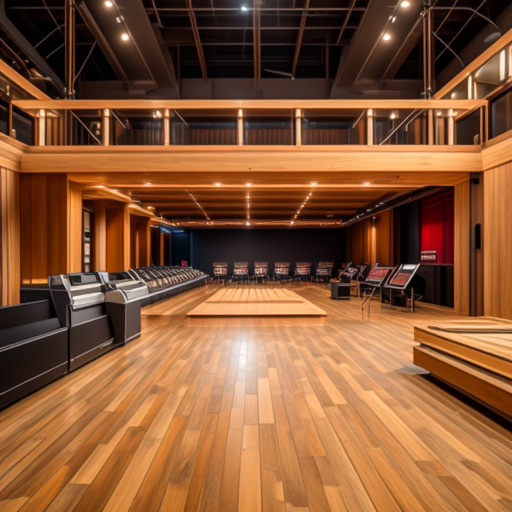

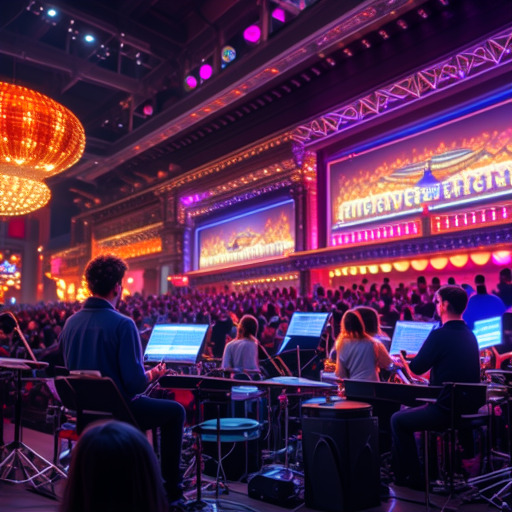

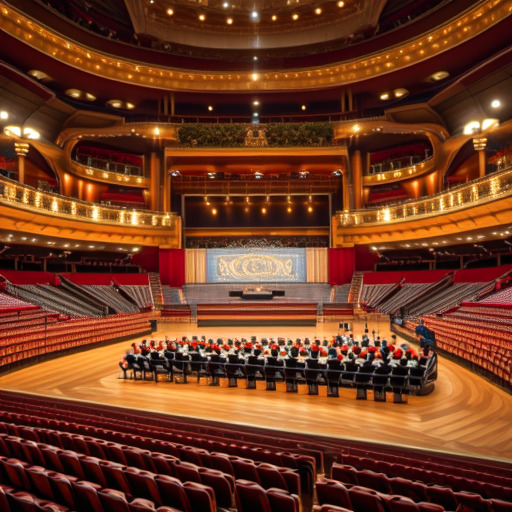





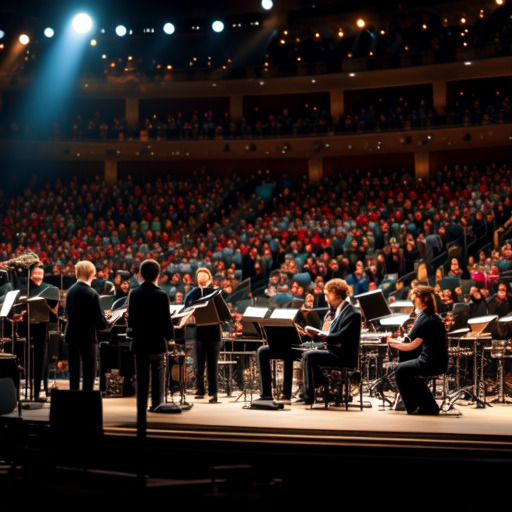
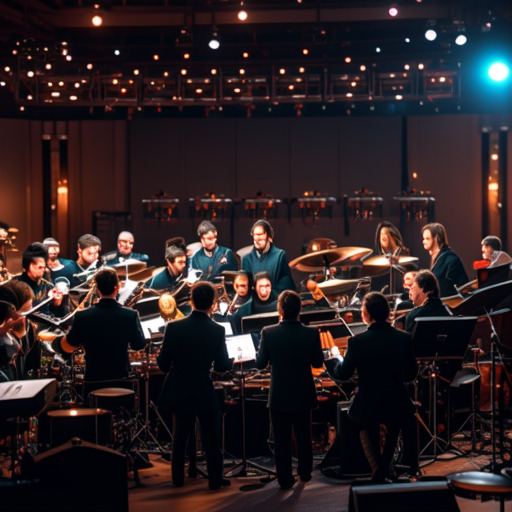






On the night of the premiere, I think about completing the performance, of this beautiful guitarist, Nadiege. I don't know if I'll have my hair dyed blonde or black green red or a bit punk. But I'm feeling younger listening to classical and electronic music. Of course from Europe. And record a DVD of that memorable night. Enthusiasm will turn into real delirium. I know that the public is used to vulgar and lackluster frivolous representations, but I think that anyone who watches my prodigious show, with extremely luxurious sets and wardrobe, in which not even the smallest detail has been neglected.
And the miracle will repeat itself.
And I will be on everyone's lips, just like my masters and I will be in charge of the orchestra's artistic direction, thanks to their influence, but I find myself forced to leave after having presented an action plan considered too revolutionary due to the excessive inclusion of foreigners . For example, putting a keyboard guitarist or drummer in an orchestra, does it look very American? But I ended up understanding that the important thing is to show great musical innovations in Europe and that is the path I want and have decided to follow.
I have more than 100 significant works of music here and directing the Chapel choirs is my dream.
However, global success has not yet come and I am being equated with Mozart. My story is intertwined with that of Mozart's own life. And if you research my origin or that of the musicians, it lies in the influence of two distinct renewal movements. The first venture I did in life was to be a painter, before becoming a musician I was a painter and that's how I entered the World of Art, into music. The second was in the concept of classical music and dance music. In both cases, it was a reaction against the routine and habits inherited from my country.
And it was up to me, a bold and enterprising girl, with great organizational skills, known in worldly and artistic circles, to bring all these forces together, creating an unprecedented form of spectacle. Computer artist.
I haven't had the support of any team yet and I'm exceptional, I'm trying to include myself and of course collaborators from the world of Art and be a guitarist of great virtuosity and talented. I make it my life's goal to make Nadiege's classical music known in the West. My show necessarily has to surprise the audience, because I move away from established formulas in such a way.
And putting aside the usual feats of virtuosity extolled by Italian composers, my music tended - without aesthetics being affected - towards new forms, in which expression took precedence over pure and simple display.
The first guitarist in history to play with the strings reversed and I retain my main role, but I got sick and am rehabilitating myself and finally the figure of the guitarist: the chords excited the Tumblr public so much. With my fragile body I acquired a hitherto unknown prominence: admirably they say Nadiege, you are funny, beautiful and well-shaped with your body and face, and the scenes in which I participated, with my videos, captured both the public's attention and were the most surprising actuations.
However, the dominant characteristic of these shows of mine is the close collaboration between other musicians. Their names, which have become inseparable, ensure the unity and splendor of my work.
The first period of activity as a DJ was exceptionally brilliant and the triumphs followed without ceasing. And Nadiege revealed to the world a young composer. Yes, Nadiege, she is super famous, and recreates a legendary East, these were the two biggest events of 2021, with
and the re-presentation of
causing less of a furore: I think the public I clearly preferred eroticism and orgy and sex.
However, the 2022 season was even more surprising, establishing Nadiege among classical music lovers. Two of Nadiege's most beautiful songs were then presented.
The year 2022 was equally important, with the season marked by three events: the scandal caused by my illness, but I still directed and played Tchaikovsky. The disagreement between “friends”, I was furious that they hadn't promoted me to the category of metal DJ, and that was the reason for my withdrawal from the world of music and the following year I returned; and finally, Nadiege's entry into the world of classical music, and everyone sees me with the argument, they actually called me the Devil.
I returned to music, and I was equally welcomed, as a DJ, by the young Nadiege, and I debuted on soundcloud.
The war took my mind off music a little.
I live between the music of Spain and Italy, countries that stimulate my creativity and exert a great influence on my sensitivity, resulting in the introduction of new original and fruitful ideas. And I changed myself a little and perfected my technique, presented new songs again, I'm just waiting for my country to reestablish peace, and show my fans increasingly daring works. I managed to gather some things and present my new creations. My collaborators are now different: I don't write song lyrics. But today I am someone new, and a master above all.
What I want is to break all ties with my country, I want to revolutionize music and just like the brilliant young musicians like Mozart who now appears at the head of the orchestra.
My desire is to remain in artistic life, completely reformulating the genre and style of my productions. This big change is very evident in bossa nova, and someone will open their mouth to argue; It's a lot of cocaine and music and the guy wears a Nike hat? Someone comes up with another argument and asks me if this is music? During the last few months I have listened to a new generation of new musicians, and between one and another I have seen the efforts they make to maintain themselves, and in the end they end up quickly dissolving.
The balance of these 10 years is impressive. Most of the more than 100 works created by me Nadiege still appear today in repertoires such as
When reviewing the list of musicians who worked with me it becomes even more impressive. As a result, I rehabilitated myself and my music became better, the melodies became true works of art.
I am the woman who, for years, enchanted and dazzled my fans on soundcloud, thanks to my ability to create through others, achieving, with tenacity and originality, true works of art.
#nadiegesabate#primeiraaparição#tumblr#repertorio#ensaios#sonhos#sonhosgrandiosos#orquestra#violino#bateria#teclado#camarote#luxo#sonhosdeluxo#mozarteuropa#influencia#movimentoartistico#pintora#artedigital#virtuosismo#expressao#criatividade#talento#ocidente#doença#recuperação#voltaporcima#SoundCloud#musica#music
1 note
·
View note
Text

Mis antiguo canal en Youtube - ¡vamos a refrescarlo un poco!
youtube
0 notes
Text
Quando fidanzati e sposati ci provano con me:

5 notes
·
View notes
Text


















Carla Mura architetture sensibili
curated by Alessandro Riva
Maretti editore, Imola 2015, 112 pagine, 23x27cm, Brossura, testi in italiano, inglese e tedesco, ISBN 978-88-89477-76-2
euro 20,00
email if you want to buy [email protected]
Catalogo della mostra tenutasi a Milano, presso la Galleria Bianca Maria Rizzi & Matthias Ritter, dal 3 giugno al 19 giugno 2015. - Testi in italiano, inglese e tedesco.
Carla Mura tra evanescenza della visione e rigore “Dall’inizio degli anni Duemila a oggi, la pittura aniconica in Italia (e, più in generale, in Europa) ha ripreso nuovo vigore, causa forse (anche) un po’ di stanchezza per forme di rappresentatività che tendevano fatalmente a tradursi in ‘genere’, vuoi in una rilettura, sebbene fortemente contemporanea, della tradizione novecentesca, vuoi in una pittura di figurazione con tendenze informali che, nella loro ripetitività, rischiavano spesso di sfiorare un virtuosismo un po’ stantio, vuoi in forme di pittura mediale, o di gusto analogico-digitale, che, nel loro carattere marcatamente tecnologico, finivano fatalmente per apparire precocemente datate. […] In questo scenario, il lavoro di Carla Mura rappresenta senz’altro un esempio, se non unico, certo raro e fortemente caratterizzato, di ricerca originale e omogenea, in grado di elaborare, con grande coerenza linguistica e una marcata sensibilità sul piano delle urgenze metodologiche, compositive e formali, una propria autonoma chiave di riappropriazione del reale attraverso il grimaldello di un materiale (nel caso specifico, il filo di cotone), che nel lavoro dell’artista è insieme mezzo e messaggio, forma e colore, segno e allegoria, strumento significante e compositivo dell’opera”.
Alessandro Riva
03/12/24
#Carla Mura#exhibition catalogue#Galleria B.M.Rizzi&MatthiasRitterMilano2015#pittura aniconica#filo di cotone#Alessandro Riva#art books#fashionbooksmilano
8 notes
·
View notes
Text
El declive del rock nacional
Desde el año 2000, el rock nacional argentino ha ido perdiendo esa chispa que lo hacía único. Con la proliferación de las bandas rolingas, el género cayó en un estancamiento creativo. Sin embargo, no podemos pasar por alto que otras bandas, aunque no sean parte de este movimiento, también contribuyeron a este declive. Y aquí entra Tan Biónica, que, aunque alejada del rock barrial, tuvo su propio impacto negativo en la escena.
El rock argentino se construyó sobre las bases de artistas que brillaron por su talento y originalidad: Spinetta, Pappo, Charly García y Luca Prodan. Cada uno aportó algo único, desde la poesía cósmica de Spinetta hasta el virtuosismo crudo de Pappo. Pero en algún momento, esa búsqueda de la excelencia fue reemplazada por fórmulas simplonas y actitudes que intentaron suplir la falta de sustancia.
Con la masificación de las bandas rolingas como La Beriso, Callejeros, Las Pastillas del abuelo, Los Gardelitos, La 25 y etc... el género comenzó a girar en torno a una estética barrial y una propuesta básica. Letras repetitivas, acordes sencillos y un énfasis en la pertenencia antes que en la calidad musical definieron esta etapa. Estas bandas ganaron popularidad después de la tragedia de Cromañón, ocupando un espacio que los grandes del rock dejaron vacío tras el desastre.
Sin embargo, Viejas Locas y Los Ratones Paranoicos se destacan como excepciones dentro de este panorama. Viejas Locas, con Pity Álvarez a la cabeza, supo transmitir una autenticidad cruda que conectaba de manera honesta con su público. Aunque su música no era técnicamente compleja, tenía un alma y una narrativa que la diferenciaban. Por su parte, Los Ratones Paranoicos, liderados por Juanse, ofrecieron un sonido sólido y una influencia clara del rock clásico, adaptada al contexto argentino con canciones que aún hoy son icónicas.
A pesar de esto, ambas bandas también contribuyeron, en cierta medida, a la masificación de una estética que más tarde sería diluida por bandas menos talentosas. En este contexto, no podemos ignorar el legado de Los Redondos. Su culto ricotero, con su énfasis en la mística y la actitud barrial, fue tomado por las bandas rolingas, pero sin la riqueza conceptual y lírica que Los Redondos manejaban con maestría.
Y luego está Tan Biónica, que representa otro tipo de problema. Aunque su música está lejos del rock barrial, su propuesta superficial y orientada al pop comercial terminó de desdibujar los límites del rock nacional. Letras edulcoradas, una estética artificial y una fórmula repetitiva que apelaba más a un público masivo que a una búsqueda artística genuina, hicieron que Tan Biónica simbolizara el vaciamiento del género. Mientras las bandas rolingas simplificaban el rock desde lo barrial, Tan Biónica lo hizo desde lo comercial, alejándolo aún más de sus raíces.
El resultado es un rock argentino que parece haber perdido su identidad. En lugar de innovar, muchas bandas optaron por repetir fórmulas seguras, dejando atrás la experimentación y la profundidad que definieron al género en sus mejores años.
Entonces, ¿qué nos queda del rock nacional? ¿Podemos volver a tener músicos que, como Pappo, Spinetta o Luca, sean auténticos y trasciendan generaciones? Es hora de debatir si el rock argentino puede recuperar su lugar o si lo hemos perdido para siempre.
7 notes
·
View notes
Note
I have a theory, based on absolutely nothing except for vibes that the Italian school, the Cecchetti method, works best for boys—while the Russian school, the Vaganova method, works best for girls.
Funnily enough, I spiritually agree with you and your vibes.
Your question actually reminds me of something interesting I read recently regarding Foundations of Classical Ballet by Agrippina Vaganova. In the English translations of the text, the translated Vaganova manual was diluted of its original intent, including its specific focus on female training. In the translation, the generic term "dancer" replaced gendered references, erasing distinctions that might have influenced how training methods are perceived or applied to male versus female dancers. The American edition resulted in the loss of the original focus of the book as a resource intended for a female course of study.
But going back to your question, I think you're saying this because you're looking at Vaganova academy girls versus boys. To me, the main difference seems to be that eight years of training is enough for the girls, but boys seem to take longer to reach the relative level which girls manage to reach in eight years. At the same time, and I'm guilty of this too, we shouldn't confuse vaganava acedemy with the vaganova method!
But in general, I think Vaganova and Cecchetti both have strengths and weaknesses. Specifically for boys, I’m sure Cecchetti might be more practical, with its heavy focus on stamina and strength, ideal for jumps, and the focus on coordination and balance, key in partnering work. But Vaganova would build that "virtuosismo," which is fundamental to male dancers as well, because it’s not like all they do is jump—they also need to be expressive. But this reflection is superficial, and almost stereotypical because both methods will build on strength and artistry, so honestly, it's a generalisation not worthy of much merit.
We associate the Vaganova method more with girls because the girls are so good that we forget that it’s through athleticism that they manage the fluidity, expressiveness, and breadth of movement, which we associate with the Vaganova method, reinforcing the concept of ethereal quality often associated with female ballet dancers.
#russian ballet#ballet#vaganova#cecchetti#elegantballettalk#elegantballetalk#vaganova academy#cecchetti method#vaganova method
9 notes
·
View notes
Text
No descargar en el Otro la propia miseria es señal de nobleza. Contener la del Otro, inmutable, sin devolver la pedrada, es de un virtuosismo aún mayor.
#dark academia#light academia#spilled writing#reflection#spilled ink#philosophy#psychology#psicología#aforismos
5 notes
·
View notes
Text
Art Blakey & The Jazz Messengers - Blues March (Live) (1958)
(English / español)
"Blues March" by Art Blakey & The Jazz Messengers, from the 1958 album "Moanin," blends blues rhythms with military march cadences. Composed by saxophonist Benny Golson, the track captures the essence of the hard bop era.
Blakey's drumming, with a march-like pattern, sets the stage for the interplay between horns. Golson’s composition merges genres, with blues elements offering a soulful counterpoint to the march rhythm. The brass section swings between the solemnity of a parade and the spontaneity of a jazz club, each soloist adding a unique voice.
Reflecting the late 1950s' socio-cultural environment, the march element nods to the Civil Rights Movement, while the blues speak to the African American experience. The song balances tradition and progress.
Blakey’s leadership fosters young talent like Golson, Lee Morgan, and Bobby Timmons, whose performances are brilliant and emotionally charged. His influence ensures individuality and group cohesion.
The recording’s clarity highlights the musicians’ interplay, with a dynamic range from quiet moments to powerful declarations. This ebb and flow keeps listeners engaged.
Live performances of "Blues March" showcase Blakey’s percussive prowess and the ensemble’s synergy. Audiences are captivated by the infectious rhythm and raw emotion.
The legacy of "Blues March" inspires new generations. Its combination of styles, historical context, and virtuosity secures its place in jazz history. Art Blakey & The Jazz Messengers, through "Blues March," exemplify creativity and depth in jazz music.
---------------------------------------------------------------------------
"Blues March" de Art Blakey & The Jazz Messengers, del álbum de 1958 "Moanin", mezcla ritmos de blues con cadencias de marcha militar. Compuesto por el saxofonista Benny Golson, el tema captura la esencia de la era del hard bop.
La batería de Blakey, con un ritmo de marcha, prepara el terreno para la interacción entre las trompas. La composición de Golson fusiona géneros, con elementos de blues que ofrecen un conmovedor contrapunto al ritmo de marcha. La sección de metales oscila entre la solemnidad de un desfile y la espontaneidad de un club de jazz, aportando cada solista una voz única.
Reflejo del ambiente sociocultural de finales de los años 50, el elemento de la marcha hace un guiño al Movimiento por los Derechos Civiles, mientras que el blues habla de la experiencia afroamericana. La canción equilibra tradición y progreso.
El liderazgo de Blakey fomenta jóvenes talentos como Golson, Lee Morgan y Bobby Timmons, cuyas interpretaciones son brillantes y están cargadas de emoción. Su influencia garantiza la individualidad y la cohesión del grupo.
La claridad de la grabación pone de relieve la interacción de los músicos, con una gama dinámica que va de los momentos tranquilos a las poderosas declaraciones. Este flujo y reflujo mantiene enganchados a los oyentes.
Las interpretaciones en directo de "Blues March" muestran la destreza percusiva de Blakey y la sinergia del conjunto. El público queda cautivado por el ritmo contagioso y la emoción descarnada.
El legado de la "Blues March" inspira a las nuevas generaciones. Su combinación de estilos, contexto histórico y virtuosismo asegura su lugar en la historia del jazz. Art Blakey & The Jazz Messengers, a través de "Blues March", ejemplifican la creatividad y la profundidad de la música de jazz.
Source: 1950s MUSIC
9 notes
·
View notes
Text

¿Cuál canción te gusta de Prince?
Prince Rogers Nelson, conocido como Prince, fue un músico, cantante, compositor y productor estadounidense nacido el 7 de junio de 1958 y fallecido el 21 de abril de 2016. Famoso por su mezcla de géneros, virtuosismo musical y estilo provocativo, Prince dejó una marca indeleble en la música y la cultura popular.
Su carrera despegó con álbumes como "1999" y "Purple Rain", que incluyeron éxitos icónicos como "When Doves Cry". Innovador constante, exploró diversos estilos y fue conocido por sus espectaculares presentaciones en vivo. En los 90, tuvo una disputa con Warner Bros. sobre el control de su música, adoptando un símbolo impronunciable como nombre y luchando por los derechos de los artistas.
11 notes
·
View notes
Text

Jan Philips van Thielen (Malinas, 1618 – 1667) Florero h. 1650-1660 óleo sobre cobre pegado a tabla 42,5 x 31 cm Nº inv. 2117 Colección BBVA España
Esta obra se relaciona con otras del mismo artista —como las que se conservan en la National Gallery de Washington o en el Fitzwilliam Museum—, que se especializó, con gran virtuosismo, en la representación de flores y de los insectos que con frecuencia las acompañan, género que encontró su mayor desarrollo en los obradores de los artistas flamencos. A diferencia de otros pintores de los Paises Bajos, Van Thielen no es hijo de un artesano, sino de un noble que se dedicó a la pintura. Fue discípulo de Seghers (1590-1661), el jesuita maestro de guirnaldas y floreros, cuya obra se aproxima mucho a la de este en composición y motivos. Si tratamos de buscar un sentido simbólico a la representación a través del lenguaje de las flores, el artista podría estar refiriéndose a todos los aspectos que definen el amor en toda su dimensión, como si se tratase de un ciclo, por la perdurabilidad del mismo asociado al renacimiento y la inmortalidad, representados mediante la mariposa y la libélula.
Información e imágenes de la web de la Colección BBVA.
4 notes
·
View notes
Text
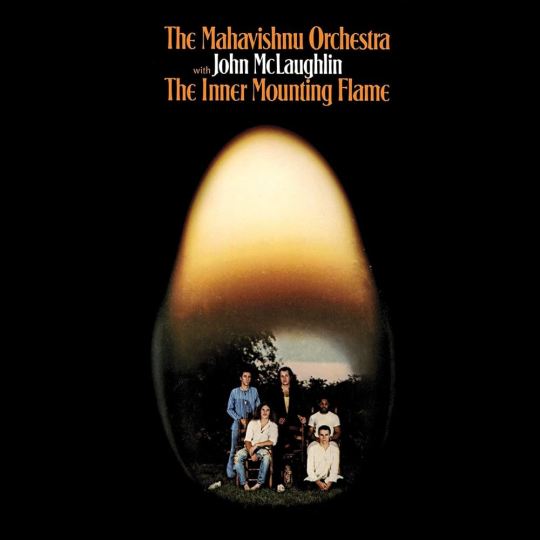
Storia Di Musica #302 - The Mahavishnu Orchestra with John McLaughlin - The Inner Mounting Flame, 1971
Mahavishnu: nella religione induista è uno dei nomi di Vishnu, e vuol dire all'incirca Divina compassione, potere e giustizia. Fu il maestro spirituale Sri Chinmoy, una delle figure più carismatiche e importanti nella diffusione delle filosofie indù in Europa e negli Stati Uniti, a dare questo nome al nuovo progetto di John McLaughlin. Il chitarrista era agli inizi degli anni '70 la nuova stella della chitarra jazz, uno dei personaggi decisivi e più incisivi nella nascita della jazz fusion. Era già famoso per il suo virtuosismo quando nella seconda metà degli anni '60 arriva negli Stati Uniti, dopo aver svezzato un'intera generazione di chitarristi inglesi (primo fra tutti un certo Jimmy Page). E fu quasi per caso che appena prima delle registrazione di In A Silent Way (1969): McLaughlin era negli USA da poche settimane per registrare con il fido batterista del secondo quintetto di Miles Davis, Tony Williams (il disco era Emergency! in power trio Williams, McLaughlin e Larry Young al basso), che con il suo fiuto eccezionale gli chiede di partecipare alle registrazioni. Ed è con il magone in gola per poter suonare con un suo mito che John inizia una collaborazione che lo porterà ad essere punta di diamante del successivo, e inimitabile, Bitches Brew, che fu registrato a poche settimane da In A Silent Way ma che vide la luce solo l'anno successivo. Nel mitico disco, una parte del suo assolo di chitarra in Bitches Brew fu isolato dal lavoro paziente e certosino di Teo Macero alla cabina di regia musicale e divenne un omaggio del maestro al suo chitarrista: John McLaughlin, dove Davis non suona nemmeno. Partecipa anche a On The Corner, ma già durane le prime registrazioni del 1969 fu lo stesso Miles a spingerlo alla carriera solista. Inizia con un gioiello: Extrapolation del 1969 lo vede in quartetto con John Surman (sassofono), Brian Odgers (contrabbasso) e Tony Oxley (batteria) in un disco che si lega ancora al bop ma che contiene già i semi di quell'albero fruttuoso che di lì a pochi anni inizierà a incantare una generazione di musicisti jazz. Nel 1971 fonda la sua band, come mentore Chinmoy, che fu influente consigliere anche di Carlos Santana, che diventerà grande amico e sostenitore del chitarrista inglese. La Mahanishnu Orchestra fu fondata insieme a Jan Hammer alla tastiera, Jerry Goodman al violino, Rick Laird al basso elettrico e Billy Cobham alla batteria, quest'ultimo anch'egli collaboratore di Miles Davis e uno dei più influenti batteristi di tutti i tempi per stile tecnica e innovazioni musicali.
Tutto è pronto per l'esordio. Presso i Cbs Studios tra la 49 East e la 52.ma strada in Midtown, Manhattan, in una sola e leggendaria sessione di prove ad Agosto del 1971, dopo averlo suonato solo un paio di volte in precedenza, viene registrato The Inner Mounting Flame, che esce prodotto da McLaughlin nel Novembre dello stesso anno. Sin da subito si capisce che la sintonia telepatica tra i musicisti è a livelli superiori, e rimarrà proverbiale negli anni a venire, e la scaletta sciorina il meglio della band e delle singole abilità dei musicisti. Meeting Of The Spirits è l'invocazione magica a colpi di assoluti istrionici di McLaughlin alla chitarra e Billy Cobham alla batteria, a cui si aggiungono pian piano quelle degli altri musicisti, in un incedere ipnotico e vorticoso. Con Dawn è come un momento di relativa pausa, un prendere fiato per ripartire con Noonward Race, rappresentazione clamorosa della velocità e della tecnica di Cobham e la chitarra che omaggia il da poco scomparso Jimi Hendrix di McLaughlin, sostenuti dal basso pulsante di Laird, il piano jazzato di Hammer e il violino “scanzonato” di Goodman. A Lotus On Irish Streams vede protagonista il violino di Goodman, grande colonna del brano, che disegna delle scie musicali che davvero fanno pensare al fluire liquido dell'elemento, in uno dei brani più sognanti dell'intero repertorio. Vital Transformation riporta sul groove funk e veloce di Noonward Race ma l'atmosfera cambia per The Dance Of Maya che parte misteriosa, poi diventa blues e finisce nella solita e proverbiale corsa a rincorrersi tra chitarra e batteria, vero marchio di fabbrica della banda. You know, You know, dalla struttura delicata, diventerà fornitura pregiata per molti artisti, ricordo David Sylvian in I Surrender, i Massive Attack in One Love, addirittura il rapper Mos Def, Cecil Otter e altri ancora. Awakening conclude con le tastiere di Hammer un disco dove la velocità e la potenza del motore musicale impressiona ancora oggi per precisione, vitalità e per la padronanza assoluta delle variazioni ritmiche, strutturali e sentimentali dei brani.
Il disco fu un successo, e venderà negli anni un milione di copie, uno dei più grandi successi del jazz. Il successo riporterà in classifica persino i primi esperimenti da solista di McLaughlin. La band si riproporrà con Birds Of Fire del 1973 (dove c'è un omaggio al Maestro in Miles Beyond), altra meraviglia, e si ritrova in studio a Londra, ai Trident, per registrare quello che secondo loro dovrebbe essere l'album definito del connubio jazz e rock. Ma la tensione è alle stelle e la band si scioglie a metà lavoro (qualcosa verrà pubblicato in Between Nothingness & Eternity). La band si scioglie, ma McLaughling continua e stavolta costruisce una nuova grande Orchestra con fiati, trombe e il violino di Jean Luc Ponty, fedele collaboratore di Frank Zappa, ed altri grandi musicisti per ampliare le visioni della musica che ha in mente, con risultati altalenanti. La Mahavishnu Orchestra avrà persino una terza rinascita a metà anni '80, e continuerà ad essere il sogno musicale di un eterno ragazzo inglese che una volta disse: Mia madre dovette sequestrarmi la chitarra per mesi perché stavo tutto il giorno a suonarla e andavo avanti nonostante mi sanguinassero le dita.
12 notes
·
View notes
Text
Eran mediados de los 70 en Argentina cuando Charly García (En sus principios conocido como “Charli García”) dejaba atrás Sui Generis para inaugurar una nueva banda, una muy cercana a las tendencias del rock progresivo de la mano grupos como Pink Floyd, Genesis, entre otros: La Máquina De Hacer Pájaros.
El video a continuación capta una entrevista de 1976, en la cual podemos reconocer una parte de la visión musical de este músico de renombre, así como el propósito que motivó el surgimiento de su hasta aquel entonces más ambicioso proyecto. Miren y juzguen por ustedes.
youtube
P.D.: Quisiera hacer una mención especial aparte a Oscar Moro, baterista de La Máquina De Hacer Pájaros y demás grupos argentinos como Serú Girán y Los Gatos. Cada 11 de julio se cumple un año más de su fallecimiento. Su versatilidad y virtuosismo lo han vuelto un referente a nivel nacional y considero importante hacerle un pequeño homenaje en esta publicación. Donde quiera que esté ahora, espero que se encuentre en paz y felicidad…




5 notes
·
View notes
Text
“ Un bottone fuori dall'asola, lo straordinario virtuosismo di Bernini, era la sua firma.”
Particolare di Scipione Borghese,
Gian Lorenzo Bernini (1632)

6 notes
·
View notes
Text
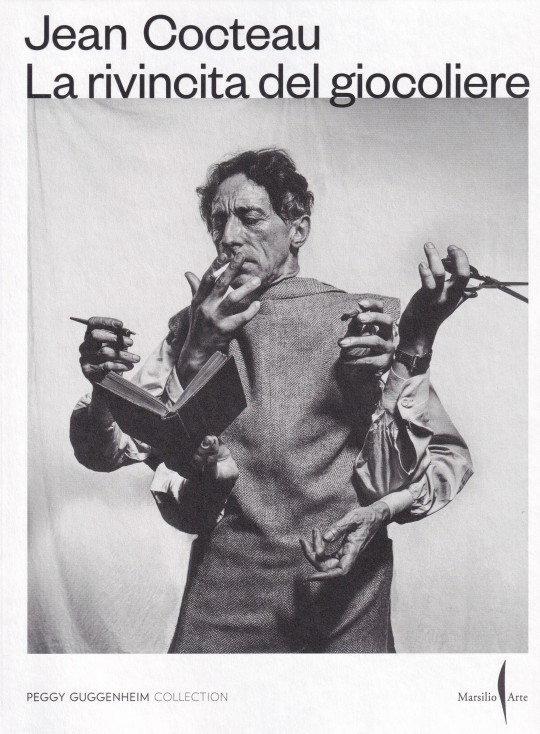

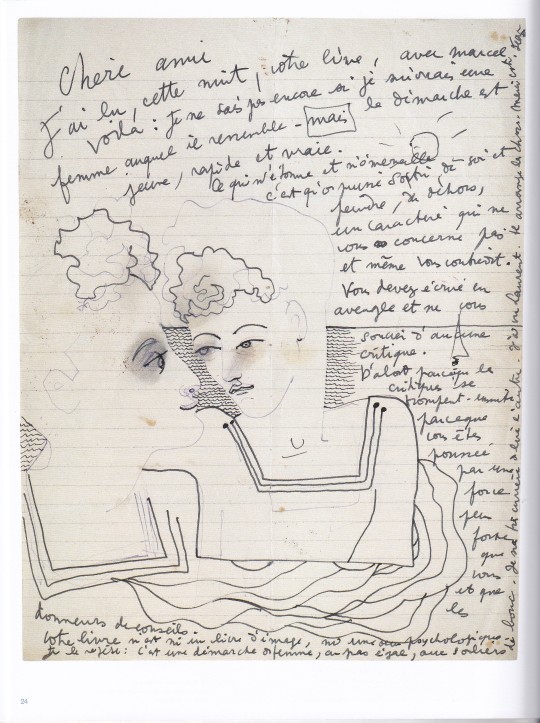

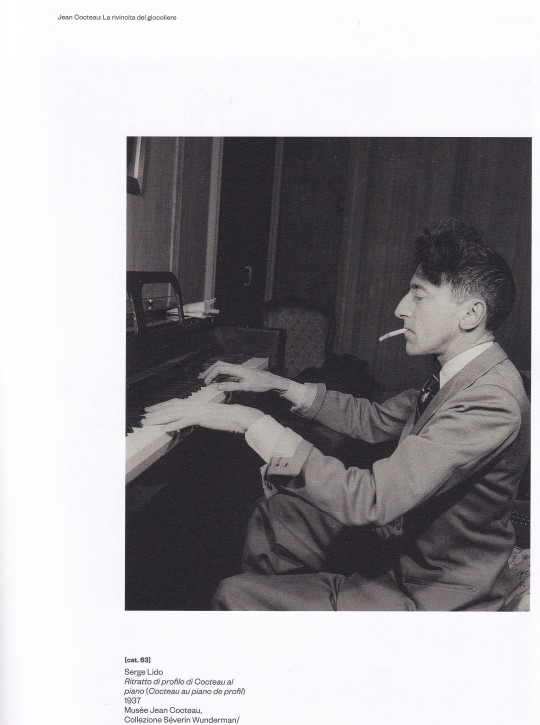
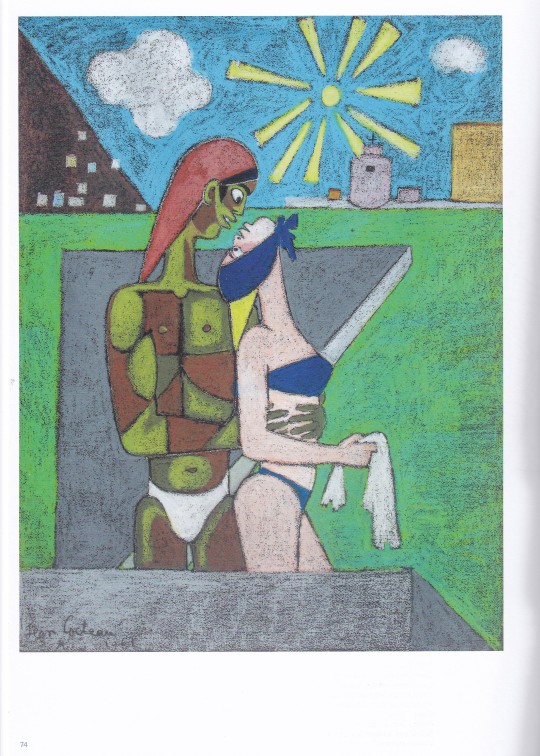
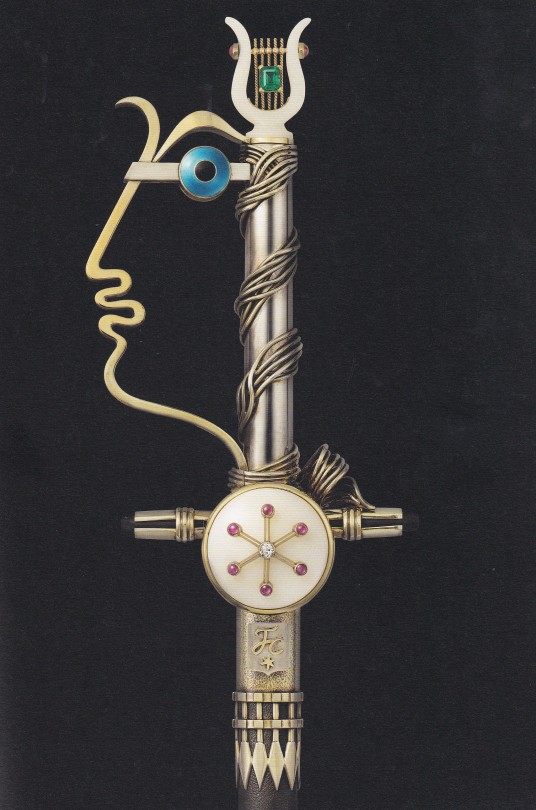

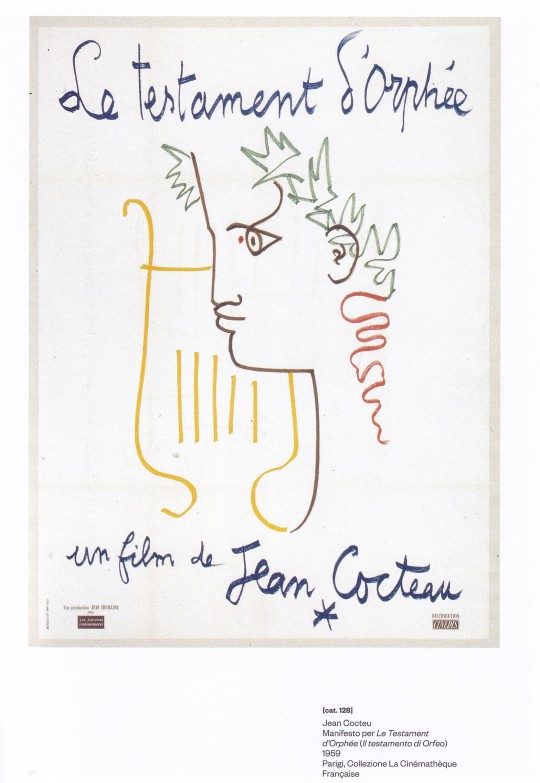

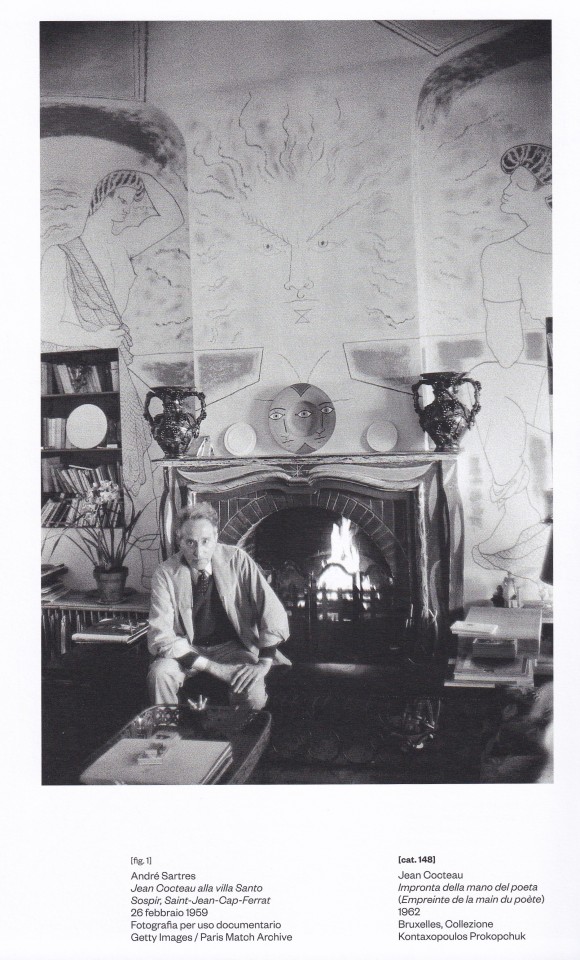
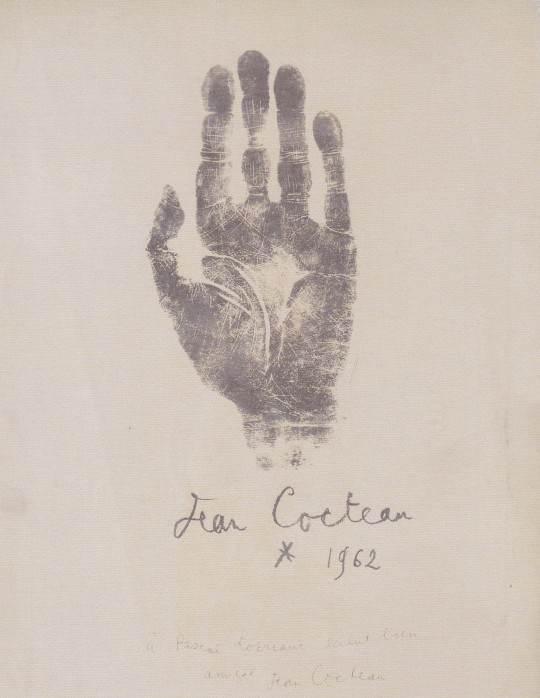
Jean Cocteau La rivincita del giocoliere
Peggy Guggenheim Collection
Kenneth E.Silver, saggio di Blake Oetting
Marsilio Arte, Venezia 2024 , 176 pagine, 20,5x26,8cm, ISBN 978124631676
euro 40,00
email if you want to buy [email protected]
«L’opera di Cocteau ci lascia una sensazione perdurante di felicità, non perché escluda la sofferenza, ma perché in essa nulla è rifiutato, rimpianto o crea rancore. La felicità è un segno di saggezza, più affidabile di quanto si creda, e forse lui ne ha più di altri…» Wystan Hugh Auden, poeta
Brillante, sorprendente e poliedrico. È Jean Cocteau (1889-1963), artista francese che ha lasciato un segno come disegnatore, regista, scenografo, muralista, designer di gioielli e di abiti. La poesia, tratto fondante del suo inconfondibile stile, è caratterizzata da atmosfere mitologiche e circensi e da una scrittura spiazzante che accompagnerà sempre la sua infinità di creazioni nei campi più disparati. In occasione della prima retrospettiva in Italia dedicata all’artista, allestita alla Collezione Peggy Guggenheim di Venezia, esce per Marsilio Arte il libro Jean Cocteau. La rivincita del giocoliere di Kenneth E. Silver, con un saggio di Blake Oetting (Orfeo, due e più volte: i riverberi queer di Jean Cocteau). Lo spazio espositivo è anche un omaggio all’amicizia che legò l’artista a Peggy Guggenheim. Fu lui, infatti, a incoraggiare la giovane collezionista ad aprire nel 1938 la galleria londinese Guggenheim Jeune. Guggenheim ricambiò il sostegno ospitando più opere di Cocteau, all’epoca amico e consulente artistico di Marcel Duchamp. Da quel momento l’artista iniziò a frequentare la casa della mecenate newyorchese a Venezia, a Palazzo Vernier dei Leoni, innamorandosi della città. Guggenheim ribadì più volte che la parola era un mezzo di espressione che Cocteau utilizzava con virtuosismo da acrobata. La rivincita del giocoliere è un richiamo alla sua abilità di riuscire ad attraversare gli ambiti più disparati con uno sguardo trasversale, capace di cogliere e mettere in relazione l’estetica e la storia. Nel suo primo libro, La spaccata, lo stesso Cocteau si dice affascinato dagli artisti delle giostre e del circo, tanto che più avanti, a carriera avviata, inserirà due acrobati e un prestigiatore cinese nel libretto del balletto Parade, e il mago Merlino in I cavalieri della tavola rotonda. Fonte inesauribile di creatività e visioni, il genio di Cocteau si manifesta nei romanzi, tra cui Il libro bianco, in film come Il sangue di un poeta, con Lee Miller nei panni di una statura greca che prende vita, e nella Macchina infernale, rivisitazione dell’Edipo Re, solo per citare alcuni dei suoi capolavori. Cocteau stesso si racconta definendosi «una menzogna che dice sempre la verità»: nella sua opera si serve regolarmente del mito per presentare una storia e allo stesso tempo «riempirla di codici, costringendo il pubblico ad andare alla ricerca di ciò che è nascosto, come giocasse a nascondino».
05/05/24
19 notes
·
View notes
Text
Estilos Artísticos y la Interculturalidad Crítica
(melanie)

https://historia-arte.com/movimientos/hiperrealismo
El hiperrealismo (llamado realismo radical por algunos), y sus variantes: fotorrealismo, realismo conceptual, posminimalismo… Un arte basado casi exclusivamente en el virtuosismo nacido a finales de los años 60.
Debemos suponer que un arte que quiere copiar la realidad milímetro a milímetro, átomo a átomo, es un arte que busca explícitamente la objetividad radicalizada, aunque no deja de ser también explícitamente una representación: pintura, escultura o lo que sea que «maneje» tan bien el artista de turno.
Porque sí, los hiperrealistas son unos tipos que pintan o esculpen muy bien. Dominan su oficio y nos lo restriegan en la cara a nosotros, pobres espectadores, que no podemos más que asombrarnos ante semejante dominio técnico.
Pero aparte de dominio técnico, el arte necesita otra cosa. Otra cosa más importante. Quizás lo realmente importante. Porque de otra manera, podríamos decir que el hiperrealismo no dista mucho de la taxidermia.
Diálogo intercultural
(Kamila)
El diálogo intercultural es un proceso de comunicación y entendimiento entre personas o grupos de diferentes culturas. Este tipo de diálogo busca promover el respeto, el reconocimiento mutuo y la cooperación entre culturas diversas, con el fin de construir relaciones más equitativas y pacíficas. Se caracteriza por ser inclusivo, abierto y respetuoso, y tiene como objetivo no solo compartir conocimientos o perspectivas, sino también aprender y enriquecerse mutuamente a través de las diferencias culturales.

Reflexión
(Kamila y melanie)
La interculturalidad es fundamental por que promueve el respeto y la compensación entre culturas , enriqueciendo nuestras perspectivas y aumentando una convivencia pacífica.
El diálogo intercultural es el hablar de distintas cosas de interculturalidad como tradiciónes lenguas y distintas culturas también ayuda a mantener una conversación con distintas lenguas ya que eso fomenta el respeto y la inclusión por qué así ya podrías convivir con más personas de diferentes culturas.
2 notes
·
View notes